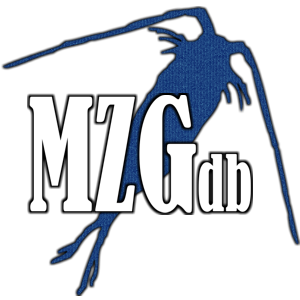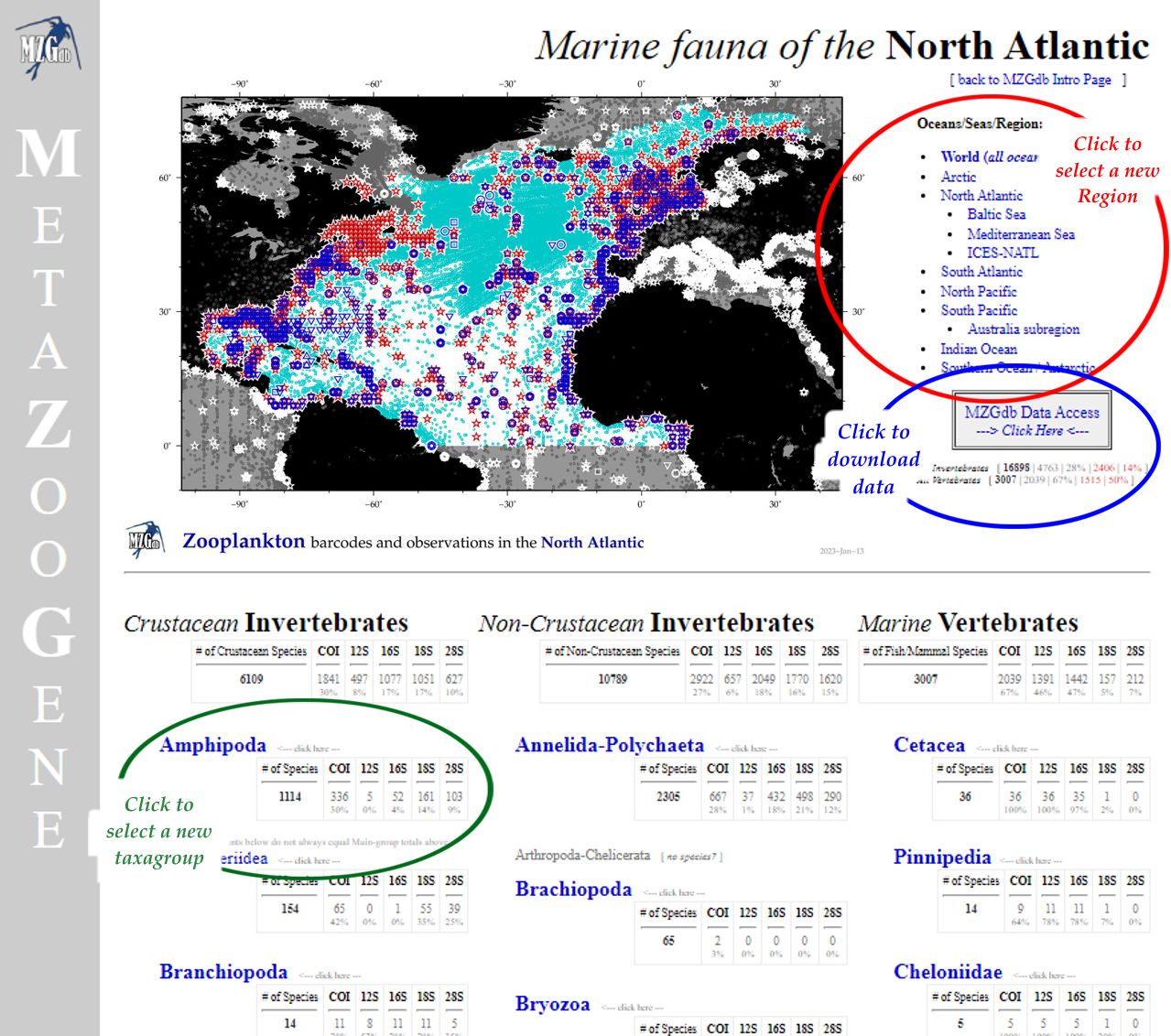
M
E
T
A
Z
O
O
G
E
N
E

|
P L A N K T O N B A R C O D E A T L A S & D A T A B A S E
|
 |
MZGdb Main Map
The MZGdb starting point is a map showing zooplankton observations and barcode-sampling-locations for the currently selected region (e.g., the "North Atlantic" shown in the example to the right).
Within this map, or any map in the MZGdb interfaces, zooplankton observation locations are shown with a light blue dots and barcode-sampling-locations are shown with red stars.
In maps for regions other than "the world", geographic areas and/or data falling out of the currently selected region are shown in dark gray and white.
Regional statistics (e.g., North Atlantic species counts) are generated only from the current region (i.e., not the dark gray areas).
To the right of the map are links for selecting a different oceanic or region of interest (e.g., the North Atlantic, the Southern Ocean, the Baltic Sea).
When a different region is selected, both the map and barcode statistics table will change to show information for that new region.
Below the map are lists of select zooplankton taxonomic groups, and some simple COI barcode stats for that taxonomic group (specific to the current geographic region).
The taxonomic groups are listed alphabetically, but divided into three columns which contain "crustaceans", "non-crustaceans", and "ichthyoplankton".
The blue name portion (e.g., "Copepoda" or "Chaetognatha") is a link that will take you to the Group Summary Page for that taxa.
If species from a given taxonomic group are present in the selected region, simple COI barcode status statistics are listed next to that group name.
For example, in the North-Atlantic, you might have these statistics for the Copepoda taxonomic group:
"Copepoda [ 975 | 308 | 31% | 206 | 21% ]".
In this example, MZGdb reports that the entire "copepoda" taxonomic group has 975 species commonly observed in the North Atlantic.
Of these 975 species, 308 species have been barcoded (or 31% of 975) but those barcodes were not necessarily sampled from within the North Atlantic.
The total barcodes value in this first statistic may have been collected in any ocean or region.
The next set of numbers in red text indicate the number of species that have barcodes sampled only in the currently-selected region (e.g., the North Atlantic), with a total 206 species (or 21% of 975) that have barcodes sampled only in the North Atlantic.
The difference of these two statistics can be important for sparsely barcoded species.
For example, you may have a globally distributed species (found in all oceans), but its currently available barcodes may only come from the North Sea or Canada.
These statistics are discussed again in the Group Summary Page guide.
Statistics for Sub-Groups and Sub-sub-Groups:
Some taxonomic groups have a sub-group (or even sub-sub-group) listed below them in an indented list (e.g., below "Copepoda" is "Calanoida" and "Cyclopoida", and below "Calanoida" is "Acartiidae").
Keep in mind that the main group statistics (e.g., 975 species in Copepoda) already include all of the sub-group pieces (e.g., 447 species in Calanoida and/or the 10 species or Acartiidae).
The group and sub-group totals are independent, as in many cases, not all of the existing sub-groups are listed (which means the sum of all sub-groups may not equal the main group sum).
For example, in "Mollusca-Gastropoda", only sub-groups for the holoplankton "Pteropoda" and "Pterotracheoidea" are listed, and MANY other sub-groups are left out.
Click here to go to the Group Summary Page guide.
|
|